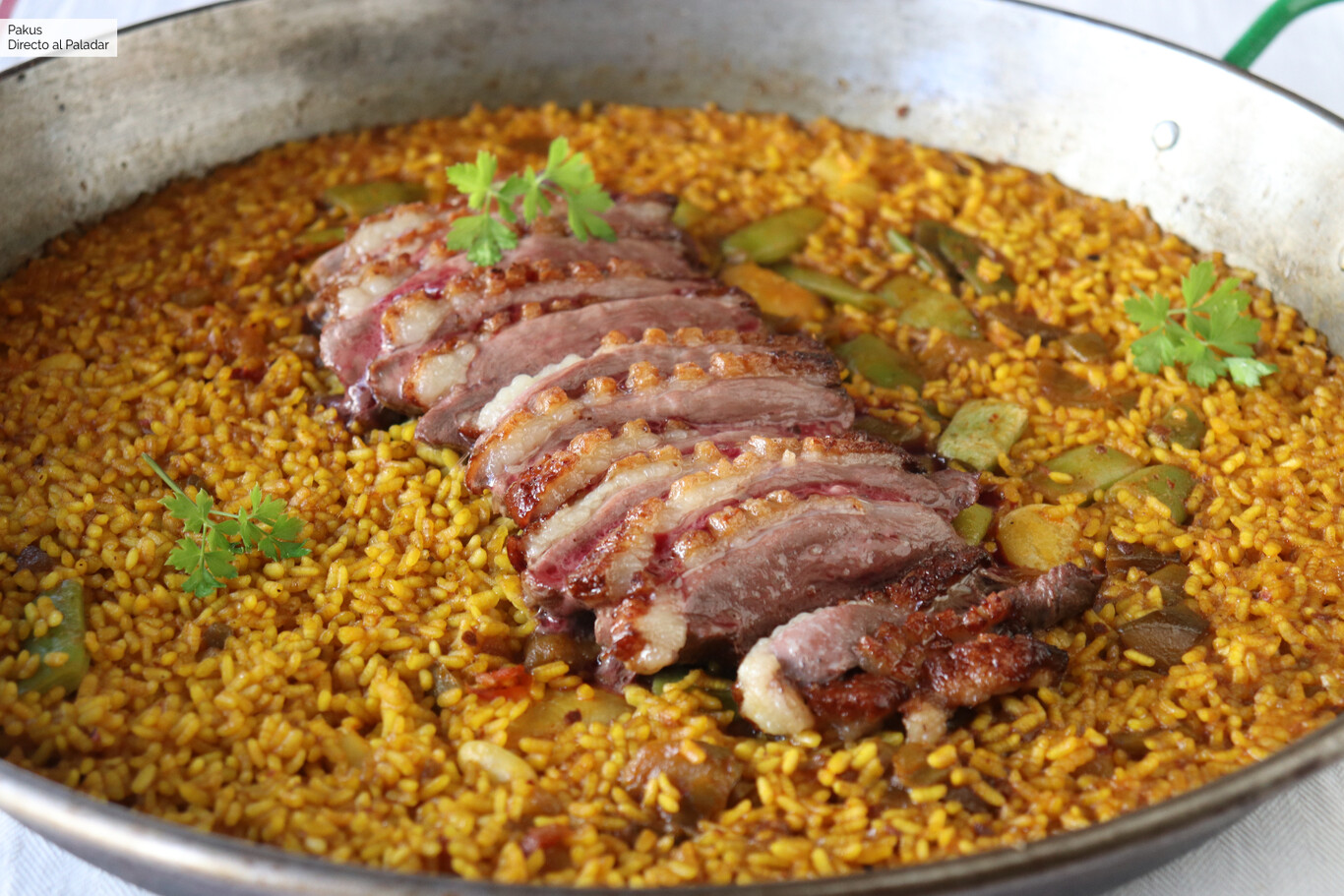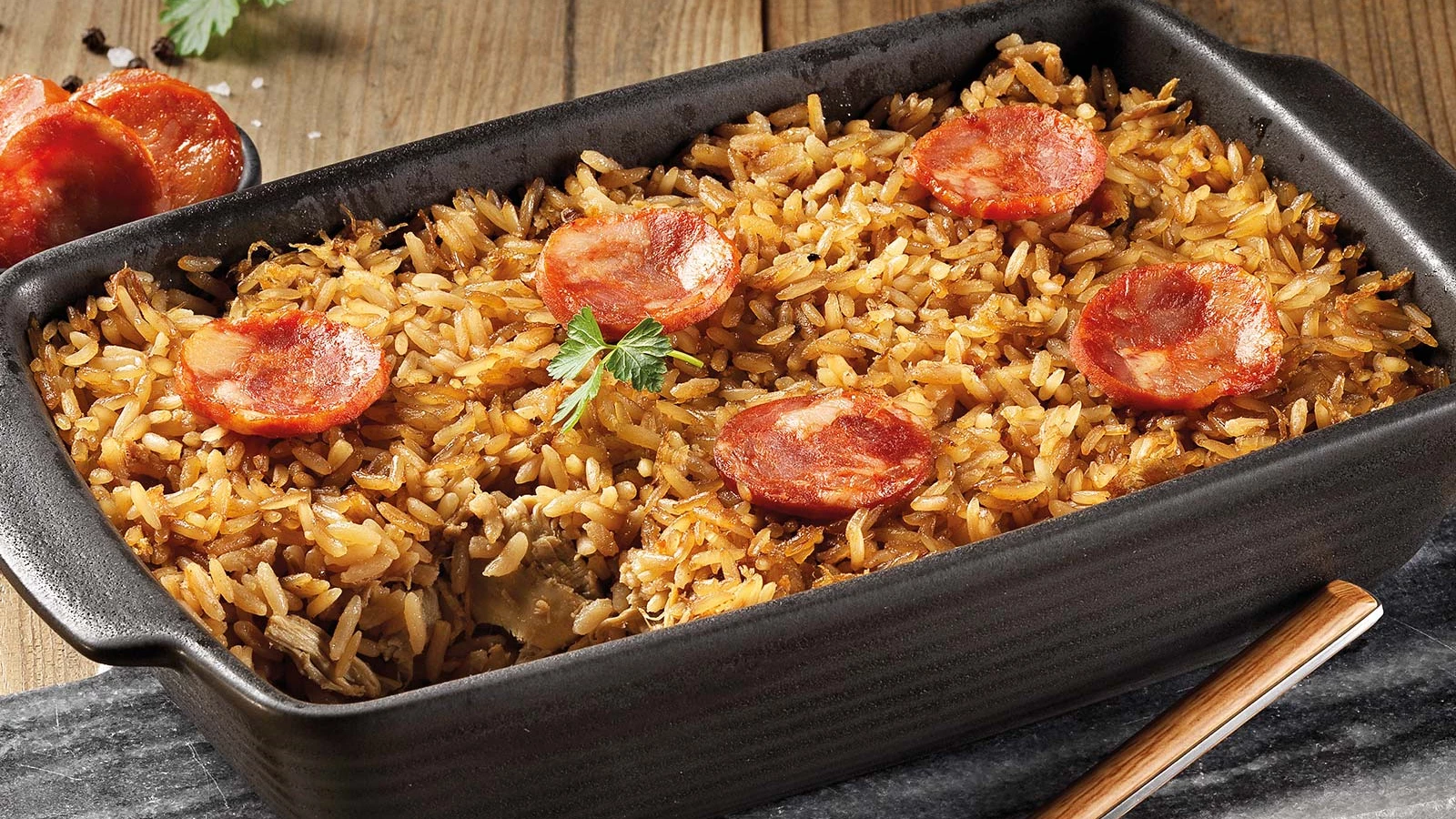Arroz de Pato, or Duck Rice, is a quintessential Portuguese dish that embodies the rich culinary traditions of Portugal. Famed for its robust flavors and hearty texture, this dish offers a unique blend of local ingredients and cooking techniques that have been refined over centuries.

History and Origin
Arroz de Pato has its roots deep in Portuguese gastronomy, likely deriving from the country’s strong hunting traditions. Duck has been a popular game meat in Portugal due to the abundance of wild ducks in the region’s wetlands. Historically, this dish was a way to make use of every part of the bird, consistent with the frugal culinary traditions of the area.
Ingredients
The dish is straightforward yet rich in flavors, primarily made from:
- Duck: The star ingredient, usually slow-cooked until tender.
- Rice: Typically cooked in the rich broth produced from boiling the duck, which absorbs all the flavors.
- Chouriço or linguiça: A type of Portuguese smoked sausage, adding a layer of spicy smokiness.
- Bacon: Provides a salty, fatty dimension that contrasts well with the duck.
- Onions, garlic, and sometimes carrots or other vegetables, sautéed to form the flavor base.
- Parsley and bay leaves, for additional aroma and taste.
Preparation The preparation of Arroz de Pato involves several steps that build layers of flavor:
- Cooking the Duck: The duck is typically boiled in water with some basic seasonings until it is almost falling off the bone. This broth is then reserved to cook the rice, ensuring that none of the flavors are lost.
- Sautéing Ingredients: Onions, garlic, and sausages are sautéed in olive oil, which forms the aromatic base for the rice.
- Combining and Baking: The partially cooked rice is layered in a baking dish with shredded duck meat, sausages, and sometimes slices of bacon. The dish is then baked in the oven until the rice absorbs all the broth and the top layer crisps up slightly.
- Serving Arroz de Pato is traditionally served directly from the oven, piping hot. It’s often garnished with slices of orange for a touch of acidity, which cuts through the richness of the duck.

Cultural Significance In Portugal, Arroz de Pato is more than just a meal; it’s a part of family gatherings and festive occasions. It reflects the Portuguese ethos of communal eating and is often served at large gatherings or during important celebrations.
Arroz de Pato is a perfect example of how simple ingredients can be transformed into a dish that is both comforting and sophisticated. It offers a taste of Portuguese history and culture, making wdbos it a beloved dish not only in its home country but also among food enthusiasts worldwide. For those looking to explore authentic Portuguese cuisine, Arroz de Pato provides a delicious starting point.
The Pros and Cons of Arroz de Pato
Arroz de Pato, or Duck Rice, is a traditional Portuguese dish known for its rich flavors and comforting qualities. As with any culinary delight, it has its own set of advantages and disadvantages, which are influenced by its ingredients, preparation, and cultural significance. Here’s an exploration of the pros and cons of this beloved dish.

Pros of Arroz de Pato
- Flavorful and Rich: One of the biggest advantages of Arroz de Pato is its depth of flavor. The combination of duck, chorizo, bacon, and aromatic herbs and spices ensures a full-bodied taste experience. The slow cooking process allows these flavors to meld beautifully, creating a complex and satisfying dish.
- Nutritious: Duck is a good source of protein and provides several important vitamins and minerals, including iron, zinc, and B vitamins. When combined with the variety of other ingredients like garlic and onions, Arroz de Pato can be quite nutritious.
- Cultural Heritage: This dish is deeply rooted in Portuguese culture and offers a taste of Portugal’s rich culinary history. It is often prepared during festivals and family gatherings, making it a dish of celebration and heritage.
- Versatility: While traditional recipes are always a favorite, Arroz de Pato allows for variations. Cooks can add different vegetables or spices, tailoring the dish to their taste preferences and dietary needs.
Cons of Arroz de Pato
- High in Fat and Calories: Duck meat, especially with the skin on, is high in fat. When combined with chorizo and bacon, the fat content of Arroz de Pato can be quite high, which might not be suitable for those monitoring their fat intake for health reasons.
- Time-Consuming to Prepare: The traditional preparation of Arroz de Pato can be quite labor-intensive and time-consuming, involving multiple cooking steps including boiling, sautéing, and baking. This can be a deterrent for those looking for a quick meal option.
- Not Widely Available: Outside of Portugal and certain parts of Europe, it might be difficult to find authentic Arroz de Pato in restaurants. Ingredients like traditional Portuguese chorizo might not be as readily available in other parts of the world, making it challenging to recreate authentic flavors.
- Dietary Restrictions: Arroz de Pato is not suitable for vegetarians, vegans, or those on a low-cholesterol diet due to its meat content and the overall richness of the dish.
Conclusion Arroz de Pato offers a delightful taste of Portuguese culture, packed with rich flavors and a comforting essence. While it has its nutritional benefits, the dish is also rich in fat and can be time-consuming to prepare, which may not appeal to everyone. Understanding these pros and cons can help individuals decide whether to include this traditional dish in their culinary explorations.
Read More Article About “Marine ecosystem : Conservation Challenges and Triumphs in Guardians of the Sea“

